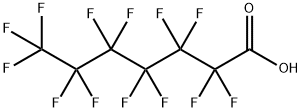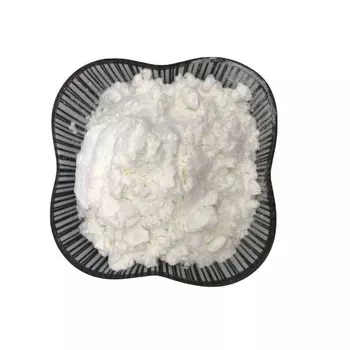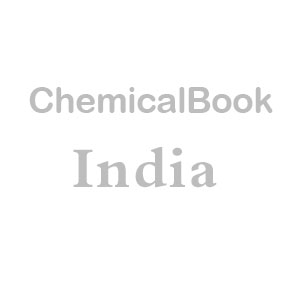1,11-Undecanedicarboxylic acid
Synonym(s):Brassylic acid;Tridecanedioic acid
- CAS NO.:505-52-2
- Empirical Formula: C13H24O4
- Molecular Weight: 244.33
- MDL number: MFCD00002740
- EINECS: 208-011-4
- SAFETY DATA SHEET (SDS)
- Update Date: 2025-01-27 09:38:02

What is 1,11-Undecanedicarboxylic acid?
Chemical properties
white powder
The Uses of 1,11-Undecanedicarboxylic acid
1,11-Undecanedicarboxylic Acid is used in the synthesis of two Bis(tetrahydroisoquinoline) which were highly cytotoxic for cancer-cell cultures and less toxic to healthy cells and exhibited noticeable antimicrobial activity against Gram-positive and Gram-negative bacteria and fungal strain Candida albicans.
Definition
ChEBI: An alpha,omega-dicarboxylic acid that is undecane substituted by carboxylic acid groups at positions C-1 and C-11.
Flammability and Explosibility
Non flammable
Properties of 1,11-Undecanedicarboxylic acid
| Melting point: | 112-114 °C(lit.) |
| Boiling point: | 415.5°C (rough estimate) |
| Density | 1.15 g/cm3 (25℃) |
| vapor pressure | 0Pa at 20℃ |
| refractive index | 1.4453 (estimate) |
| storage temp. | Sealed in dry,Room Temperature |
| solubility | DMSO (Slightly), Methanol (Slightly) |
| form | Solid |
| pka | 4.48±0.10(Predicted) |
| color | White to Off-White |
| Water Solubility | Insoluble |
| CAS DataBase Reference | 505-52-2(CAS DataBase Reference) |
| NIST Chemistry Reference | Tridecanedioic acid(505-52-2) |
| EPA Substance Registry System | Tridecanedioic acid (505-52-2) |
Safety information for 1,11-Undecanedicarboxylic acid
| Signal word | Warning |
| Pictogram(s) |
 Exclamation Mark Irritant GHS07 |
| GHS Hazard Statements |
H319:Serious eye damage/eye irritation H412:Hazardous to the aquatic environment, long-term hazard |
| Precautionary Statement Codes |
P273:Avoid release to the environment. P305+P351+P338:IF IN EYES: Rinse cautiously with water for several minutes. Remove contact lenses, if present and easy to do. Continuerinsing. |
Computed Descriptors for 1,11-Undecanedicarboxylic acid
| InChIKey | DXNCZXXFRKPEPY-UHFFFAOYSA-N |
New Products
3-Iodophenylacetic acid 3-Pyridineacetonitrile, α-hydroxy- 2-Propanamine, 1-chloro-, hydrochloride (9CI) 3-(hexyloxy)-4-(pyridin-3-yl)-1,2,5-thiadiazole 2-Hexyn-1-ol Dibenzo-18-crown-6 Nickel(II) perchlorate hexahydrate, 98% 4-Bromophenylacetonitrile, 95% 3-Bromo-4-fluoroaniline, 97% Sodium tetraborate decahydrate, 98% Palladium(II) acetate, trimer, Pd 99% 4-Bromo-2-chlorotoluene, 97% N N Dimethylformamide Dimethyl Acetal (Dmf Dma) 2,3-Dichloro Benzoyl Cyanide [Side Chain] Bis(2-Chloroethyl) Amine Hydrochloride L-Glutamic Acid Diethyl Ester Hydrochloride 5-(Difluoromethoxy)-2-Mercaptobenzimidazole 1-Ethyl-3-(3-Dimethylaminopropyl)-Carbodiimide Hydrochloride [EDC Hcl] 1,4-Napthoquinone Bromoiodomethane Sodium Bicarbonate Methylene Dichloride (MDC) Ethyl Acetate Indole-3-Carbinol (I3C)Related products of tetrahydrofuran








You may like
-
 505-52-2 Brassylic acid 98%View Details
505-52-2 Brassylic acid 98%View Details
505-52-2 -
 Brassylic acid, 95% CAS 505-52-2View Details
Brassylic acid, 95% CAS 505-52-2View Details
505-52-2 -
 Tridecanedioic Acid CAS 505-52-2View Details
Tridecanedioic Acid CAS 505-52-2View Details
505-52-2 -
 Tridecanedioic acid 98% (GC) CAS 505-52-2View Details
Tridecanedioic acid 98% (GC) CAS 505-52-2View Details
505-52-2 -
 Tridecanedioic acid 98% CAS 505-52-2View Details
Tridecanedioic acid 98% CAS 505-52-2View Details
505-52-2 -
 Cyclohexane, (2-propynyloxy)- 67967-07-1 98+View Details
Cyclohexane, (2-propynyloxy)- 67967-07-1 98+View Details
67967-07-1 -
 3-Iodophenylacetic acid 1878-69-9 98+View Details
3-Iodophenylacetic acid 1878-69-9 98+View Details
1878-69-9 -
 132945-75-6 (S)-1-Boc-3-methanesulfonyloxy-pyrrolidine 98+View Details
132945-75-6 (S)-1-Boc-3-methanesulfonyloxy-pyrrolidine 98+View Details
132945-75-6
Statement: All products displayed on this website are only used for non medical purposes such as industrial applications or scientific research, and cannot be used for clinical diagnosis or treatment of humans or animals. They are not medicinal or edible.
